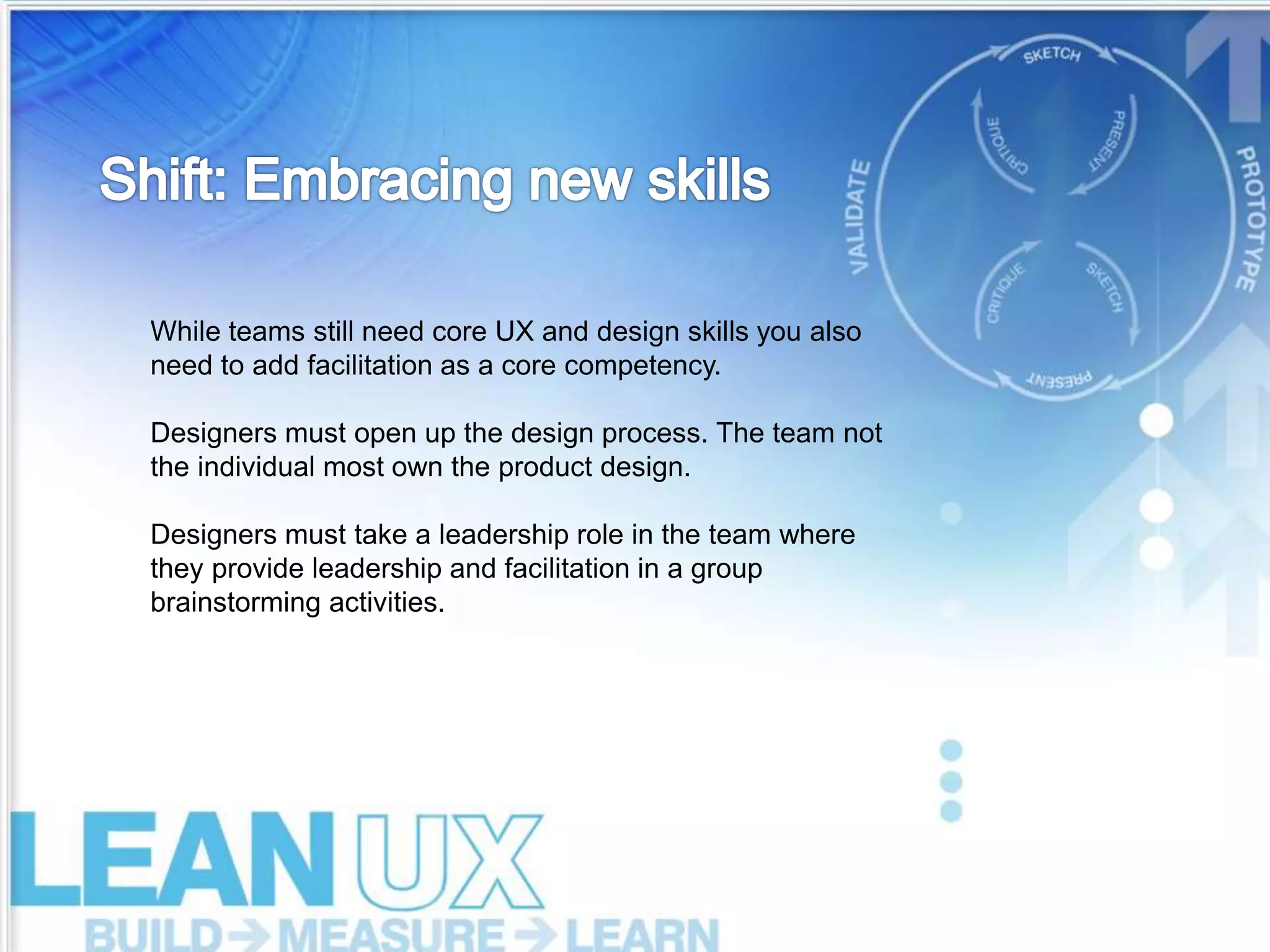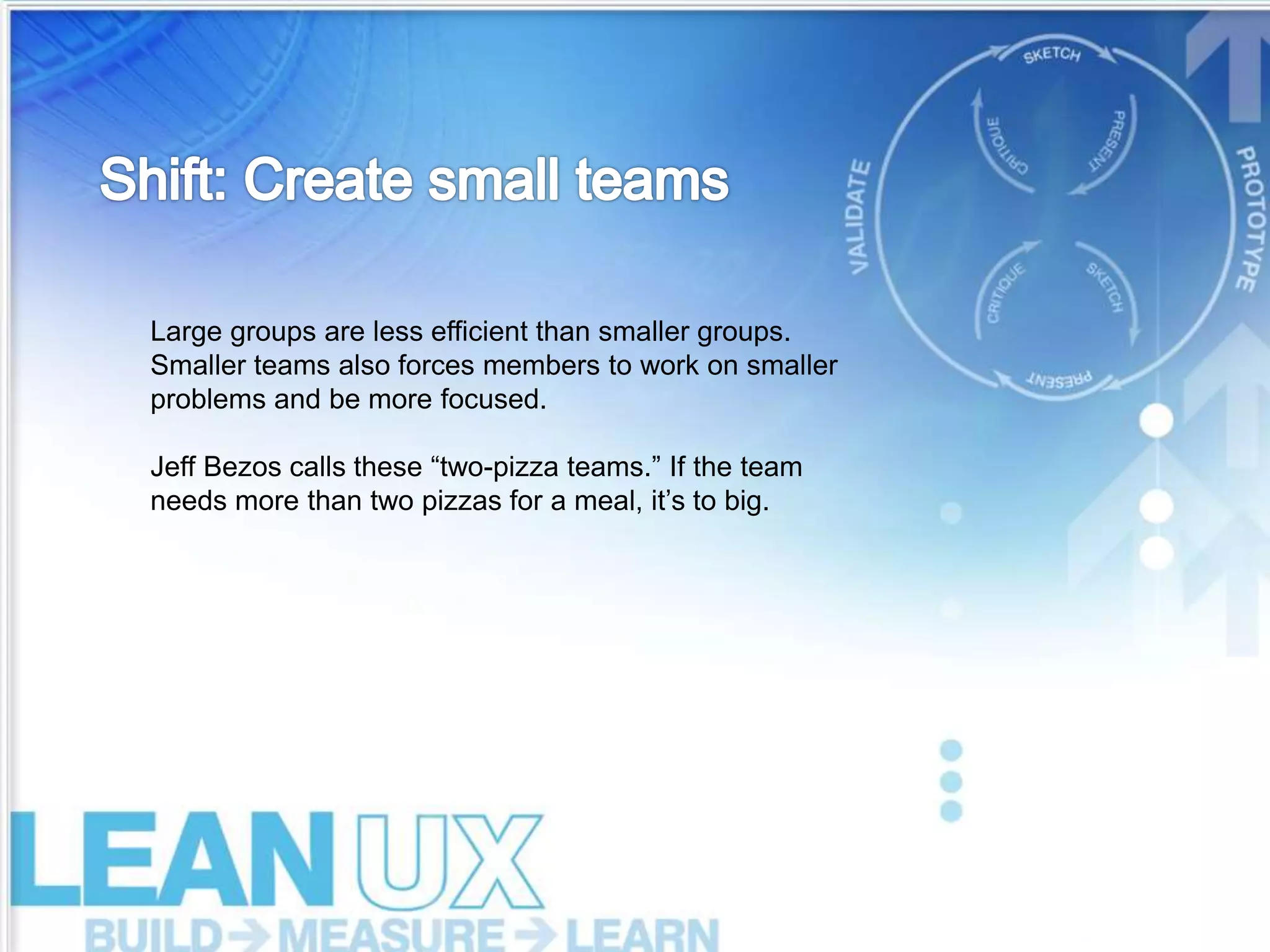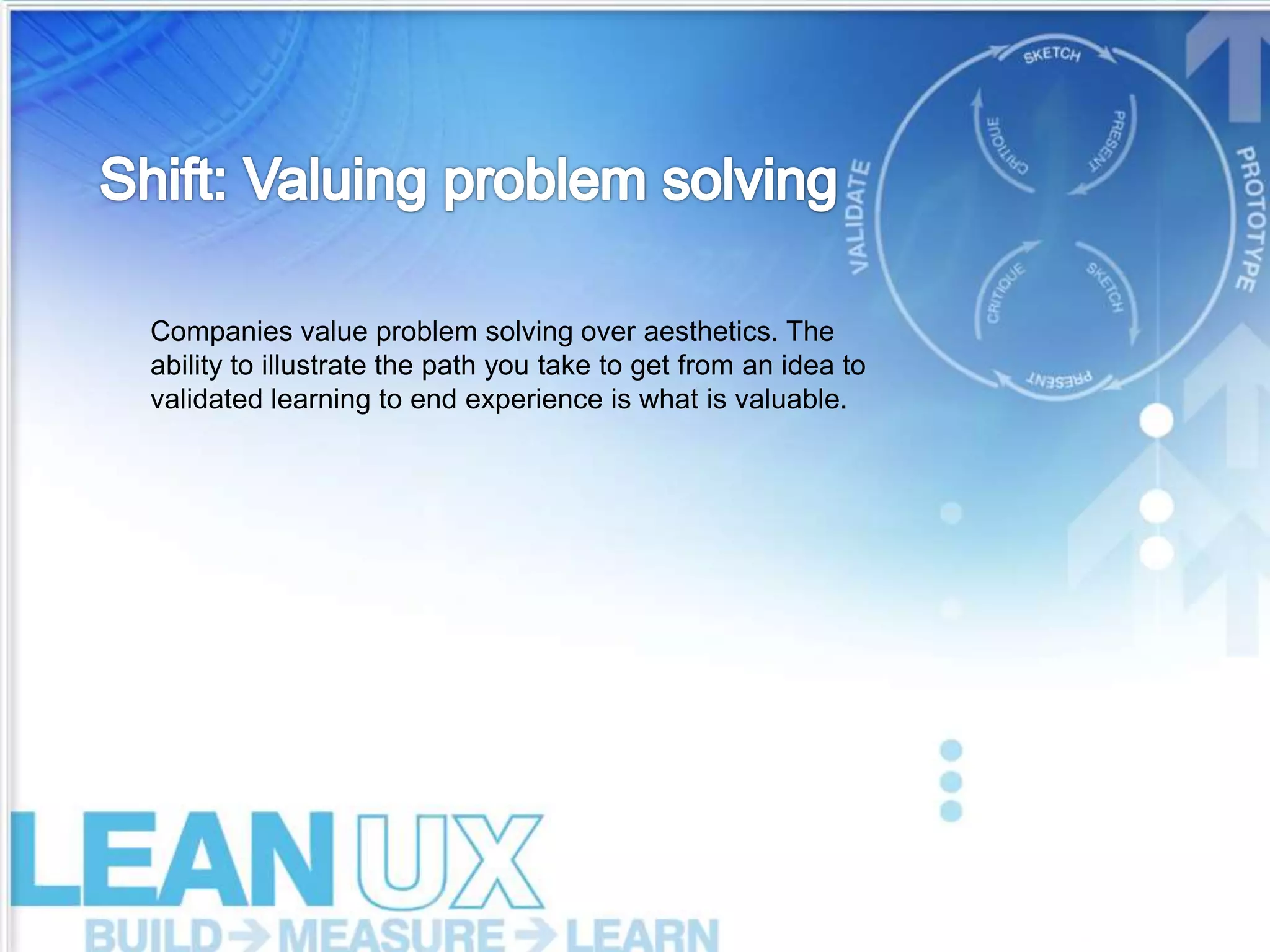The document discusses applying lean principles to enhance user experience in an agile environment, emphasizing iterative design, rapid experimentation, and cross-functional collaboration among teams. It critiques traditional deliverable-focused methodologies, advocating for a focus on user outcomes and the removal of waste in the design process. Key concepts include the creation of minimum viable products (MVPs), continuous user feedback, and fostering a culture of experimentation and learning within teams.












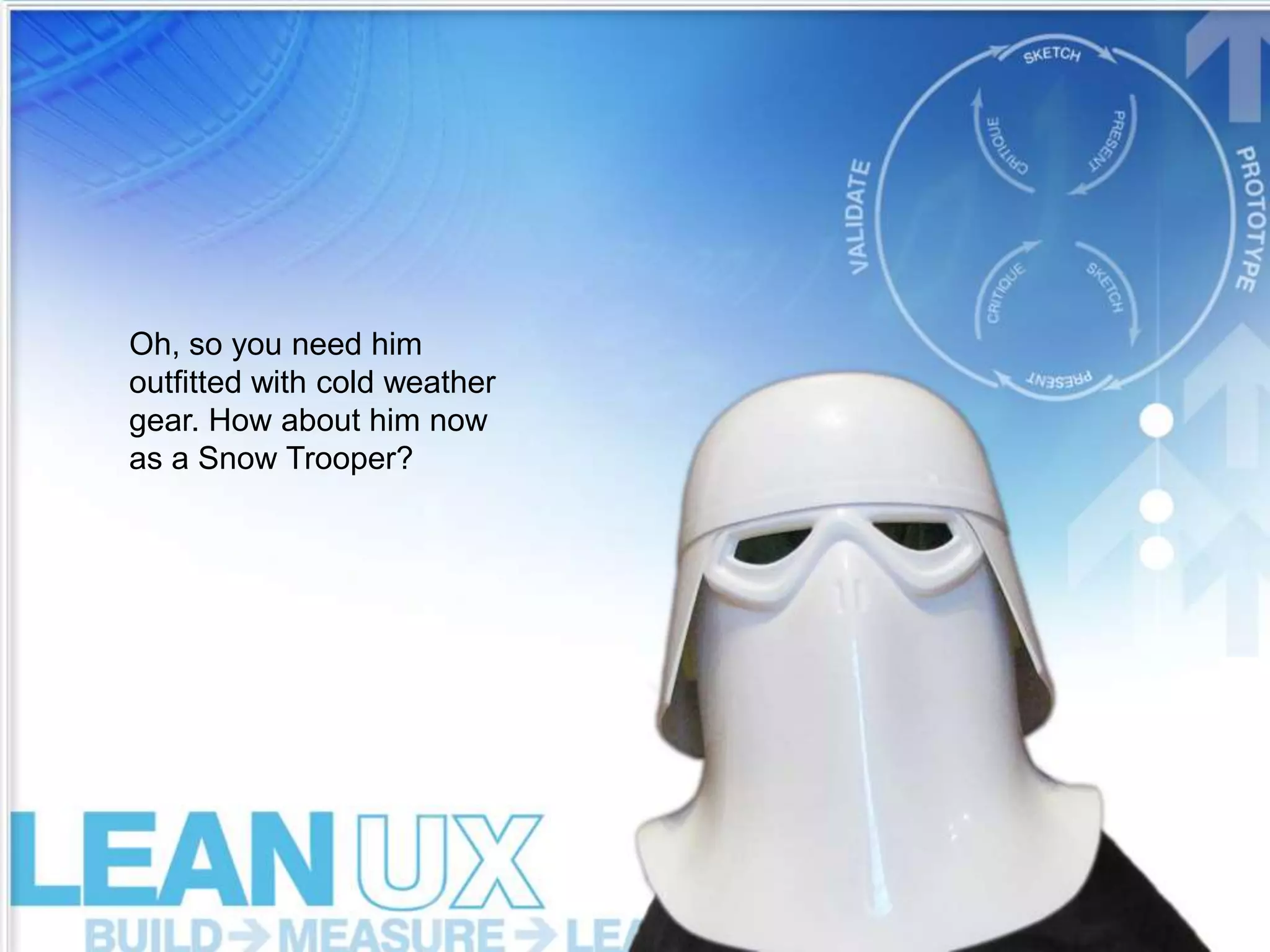








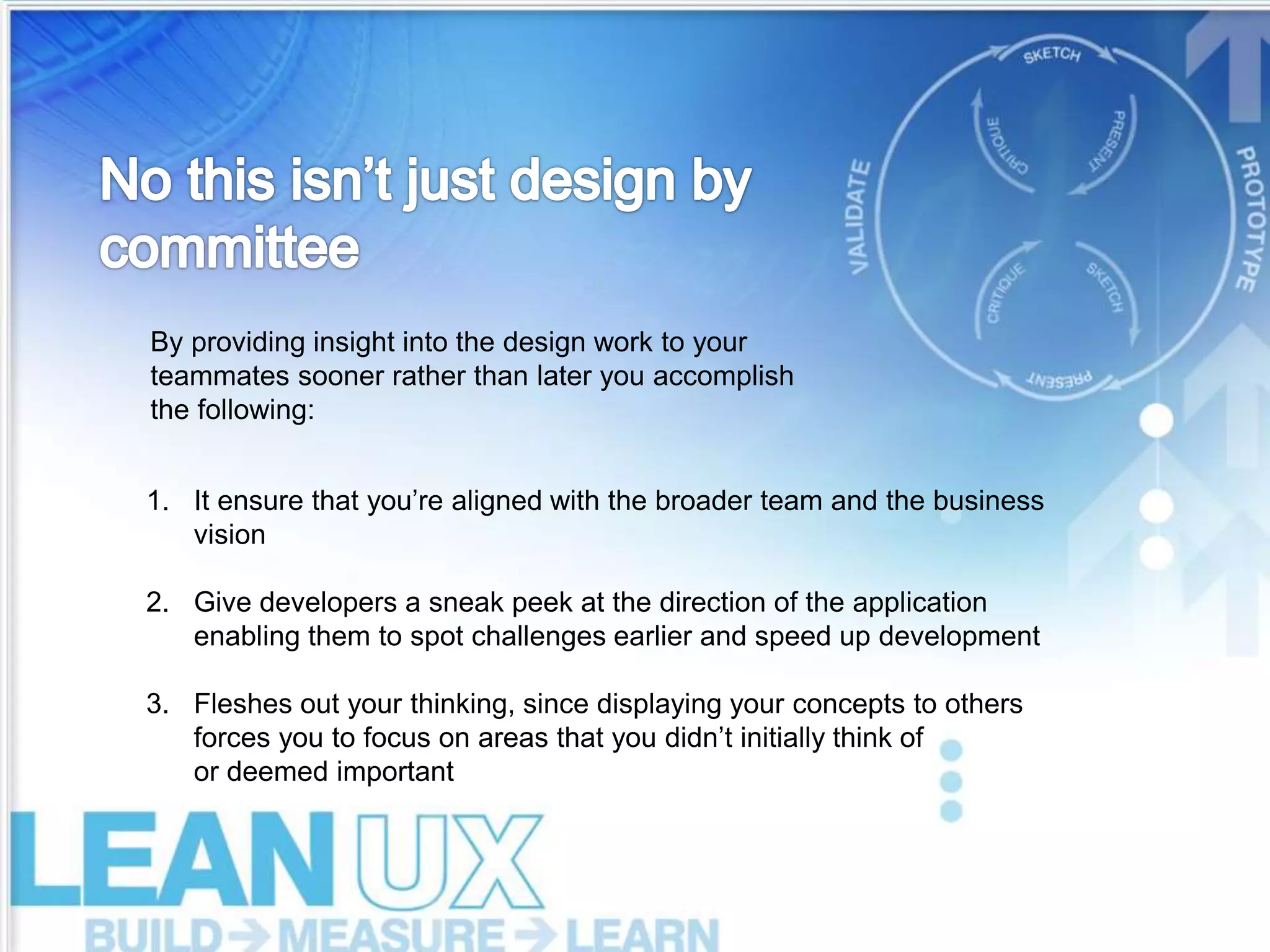
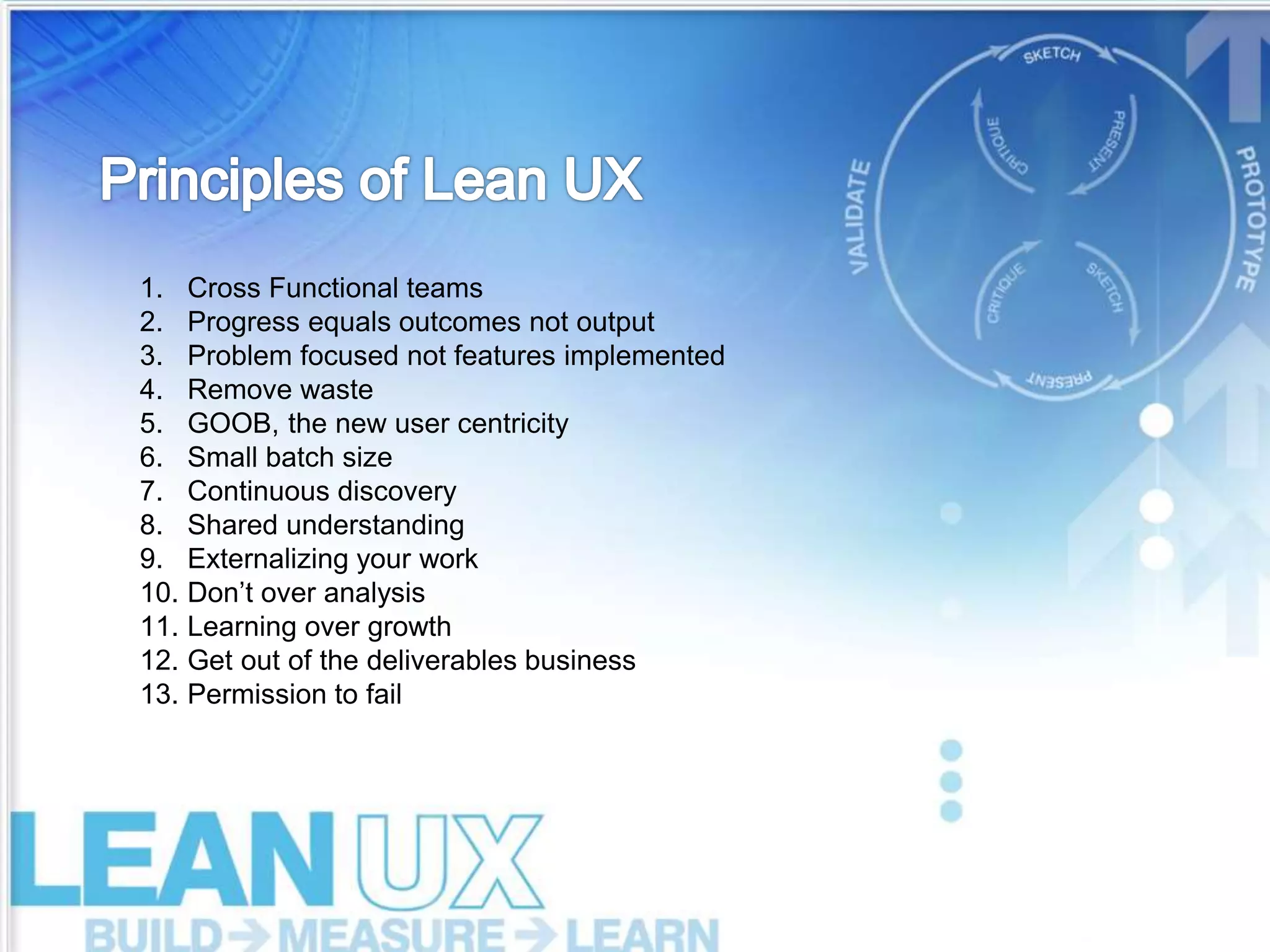







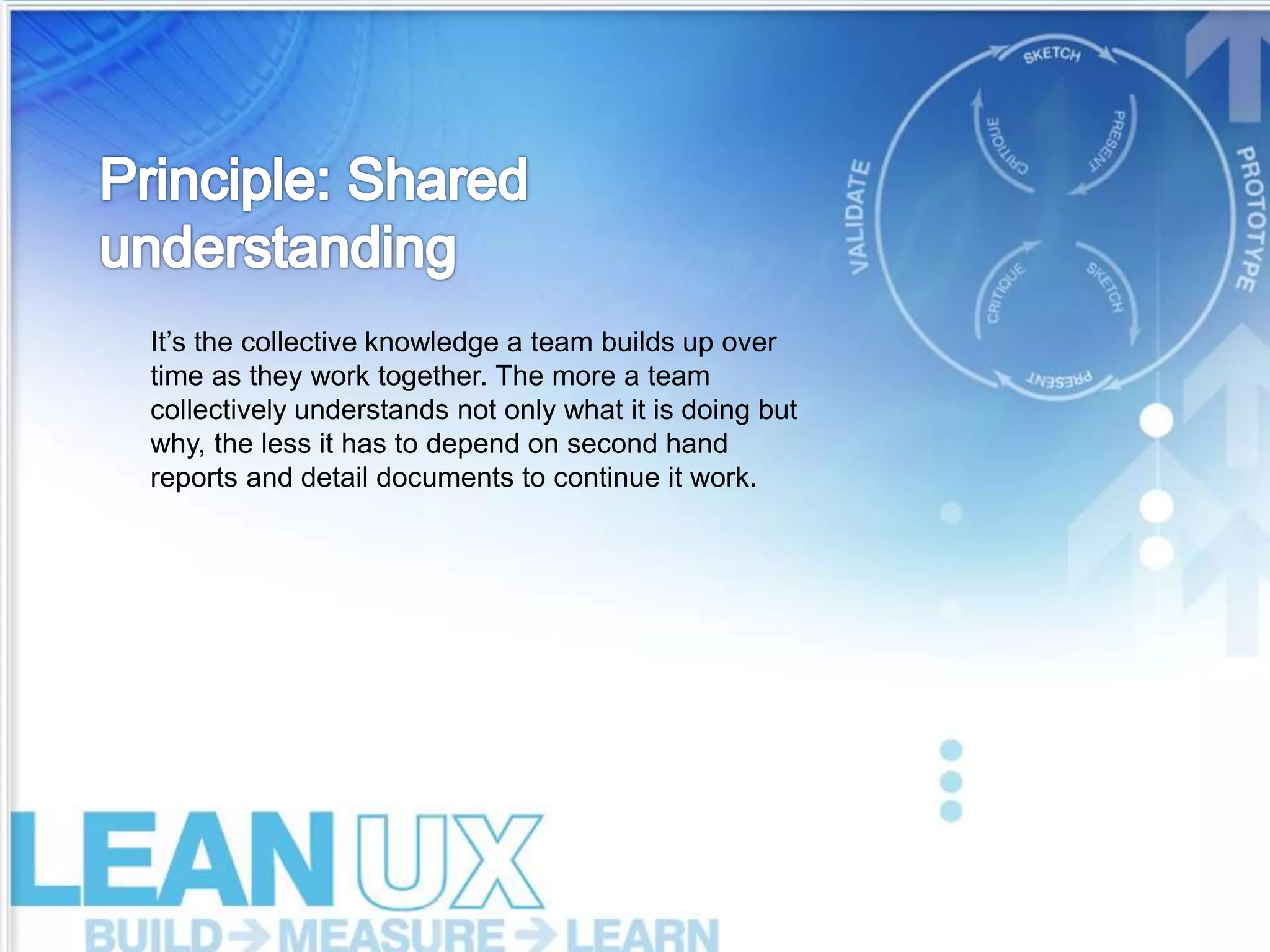


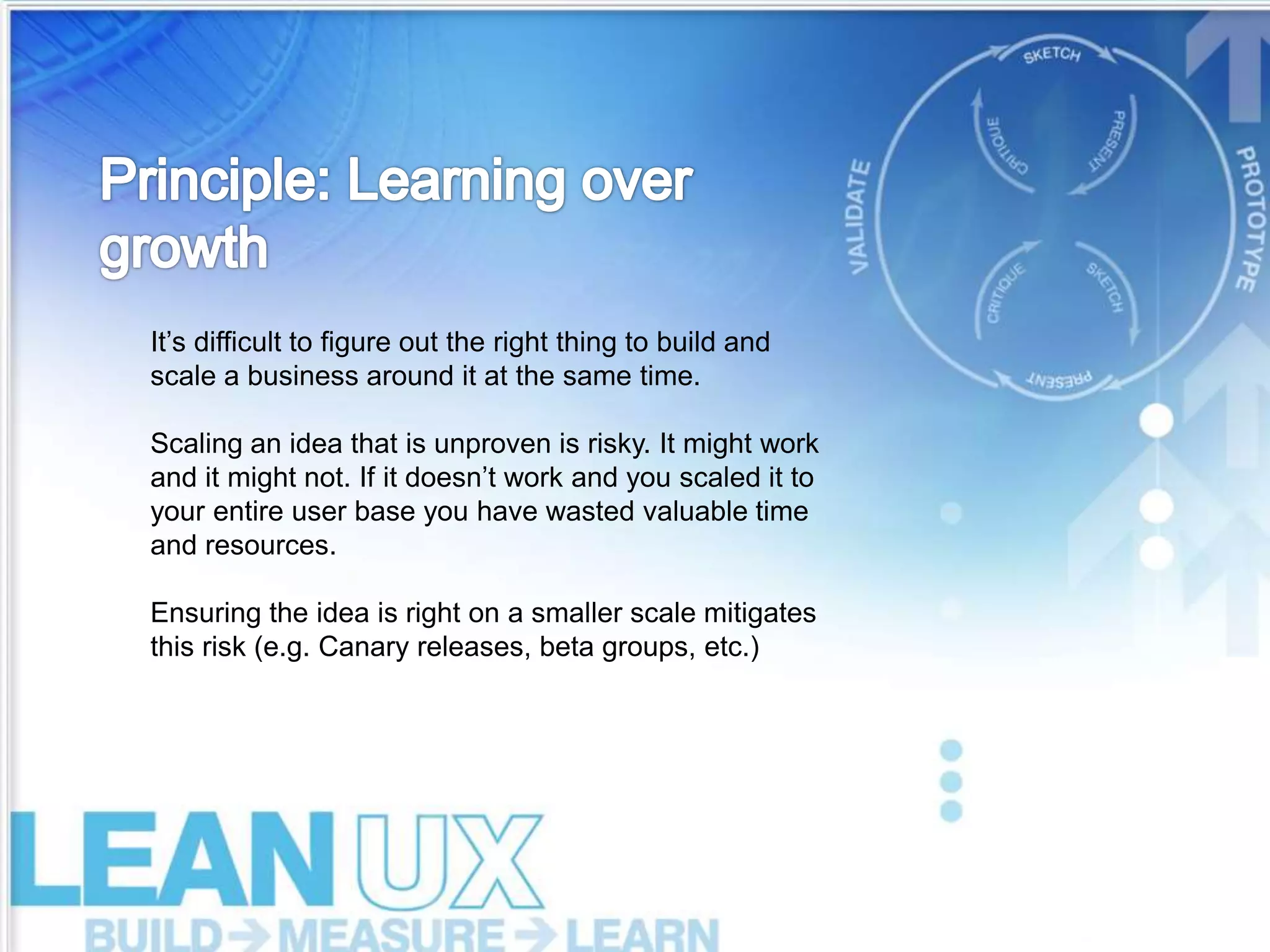

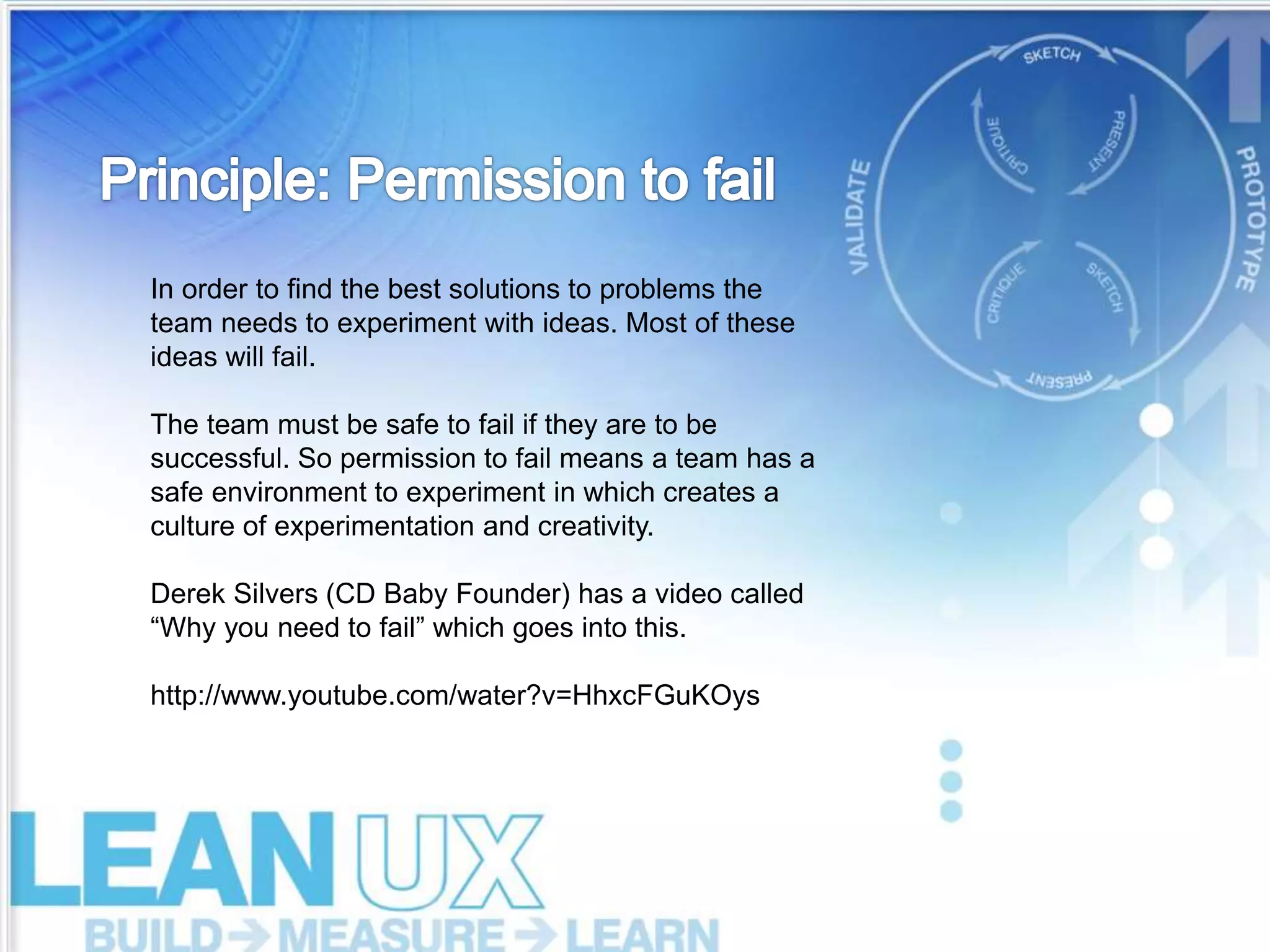








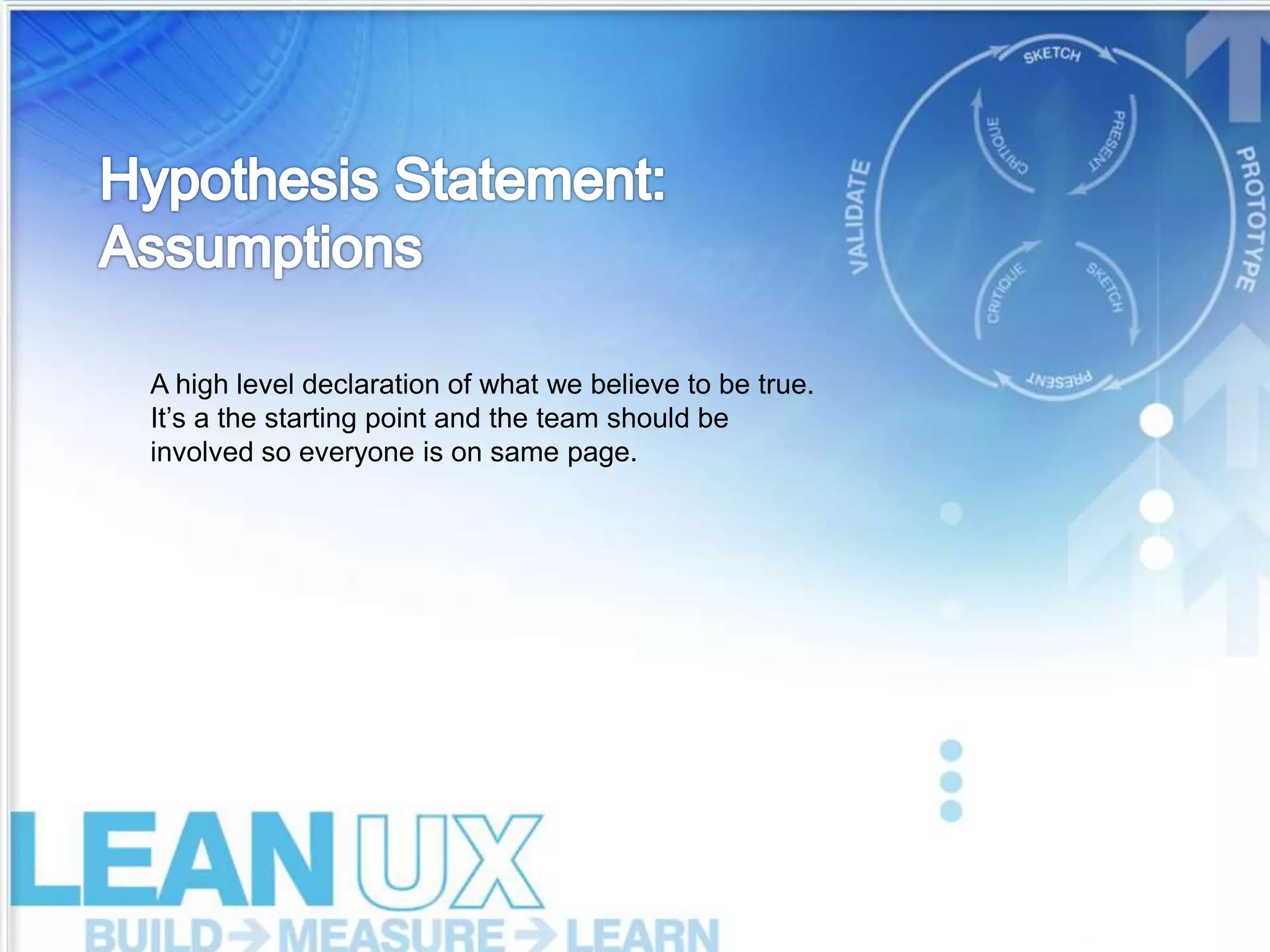
![More detailed description of our assumptions that
target specific areas of our product / workflow for
experimentation. Breaking down your assumptions
into hypotheses allows you to test these
assumptions.
• We believe this statement is true
• We will know we’re right/wrong by the following
feedback from users
• [qualitative feedback] and/or [quantitative
feedback] and/or [key performance indicator
change].](https://image.slidesharecdn.com/lean-ux-presentation-150218080548-conversion-gate02/75/What-is-Lean-UX-46-2048.jpg)










